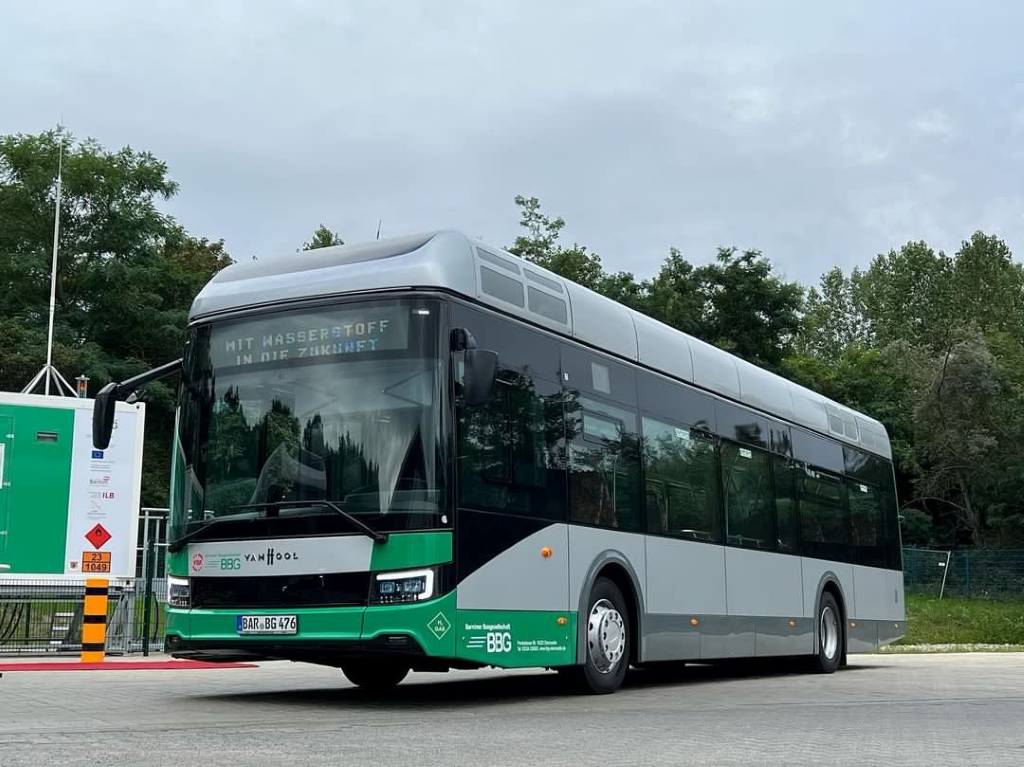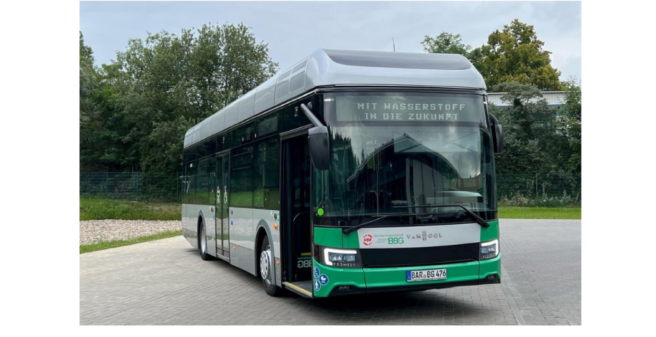
In the Barnim district northeast of Berlin, the “Barnimer Busgesellschaft mbH (BBG)” is one of the last three German trolleybus operators (Eberswalde, Esslingen and Solingen). The two lines 861 (Nordend – Brandenburgisches Viertel) and 862 (Ostend – Brandenburgisches Viertel) are operated, with both lines jointly using the stretch of line between city centre and Brandenburgisches Viertel. The loop through the Brandenburgisches Viertel is then travelled in opposite directions, line 862 clockwise, line 861 anticlockwise.
Twelve Solaris Trollino 18 articulated trolleybuses from 2010 to 2012 (cars 051 to 061 and 063) are available, the last of which, bus 063, is even a hybrid trolleybus. This technology was still quite new at the time and is intended to enable the bus to also serve line sections without overhead lines – today already quite common. Another two trolleybuses are currently on order.
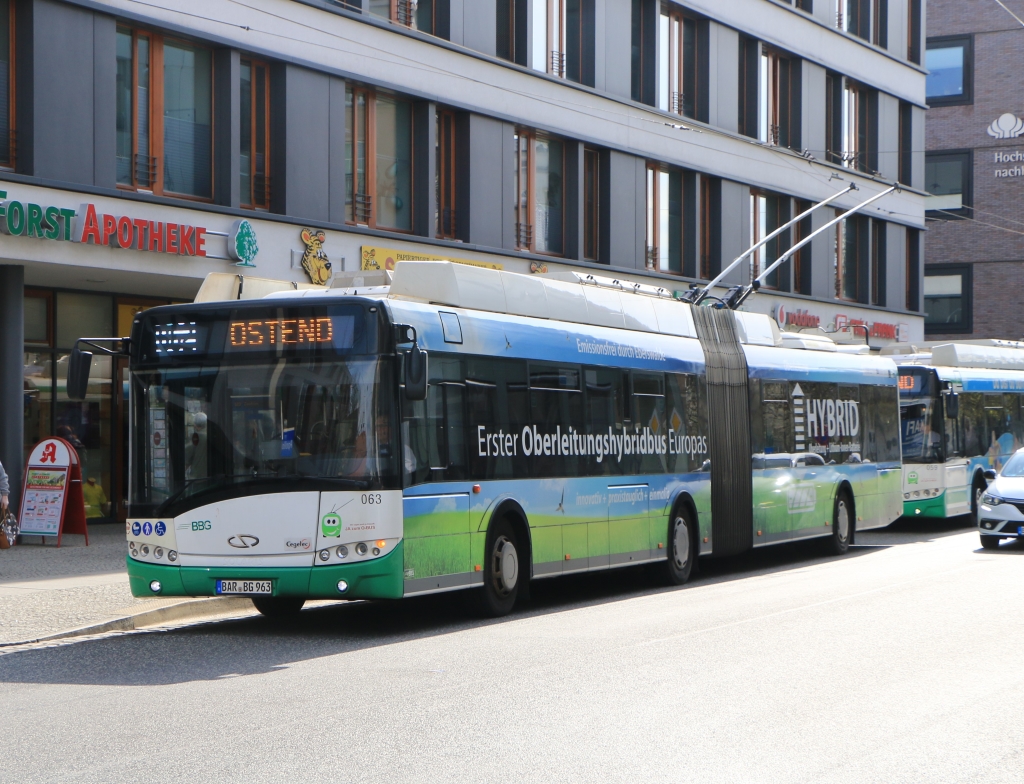
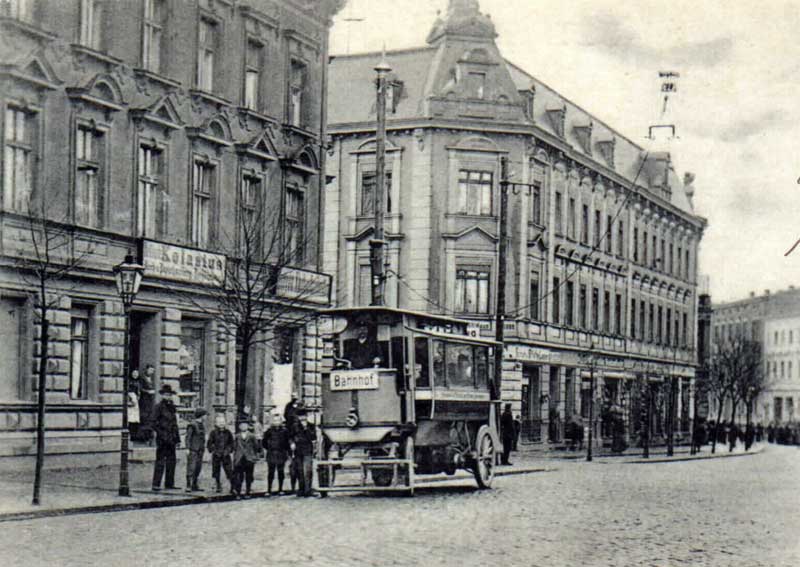
Eberswalde’s trolleybus service has existed since 9 November 1940, so it will soon be 83 years old. This makes it the oldest of the three German trolleybus operations still in existence today. And at the beginning of the last century, it also had a predecessor operation in the form of a “trackless tram” (according to the Lombard-Gérin system).
But the BBG does by far not only operate the trolleybus in the district town of Eberswalde. Rather, it is on the road in the entire Barnim district. It also operates the city transport in Bernau, the second largest city in the district. In Berlin, a street between the districts of Wedding and Mitte is named after her, which gained a rather sad notoriety during the time of the Berlin Wall.
In Bernau, too, the BBG relies on electric propulsion for its buses. Therefore, on 22 August, six buses from the manufacturer Van Hool of the brand new type “A 12 LF FC” were put into service for the city lines in Bernau (A = Autobus, 12 = rounded length in metres, LF = Low Flor (low floor), FC = fuel cell). The BBG emphasises that the vehicles already belong to the fourth generation of hydrogen buses from Van Hool and thus come from a manufacturer that has a lot of experience with this technology. The handover took place in the presence of Bernau’s mayor André Stahl, Brandenburg’s infrastructure and state planning minister Guido Beermann, district administrator Daniel Kurth, BBG managing director Frank Wruck and Thomas Barkmann from hydrogen supplier Enertrag.
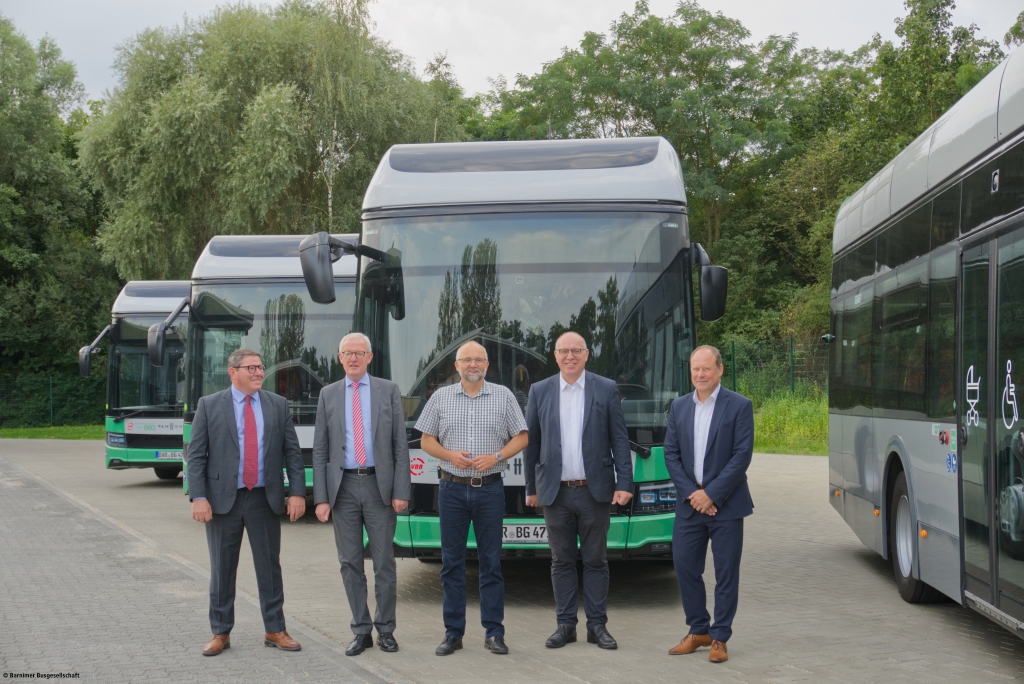
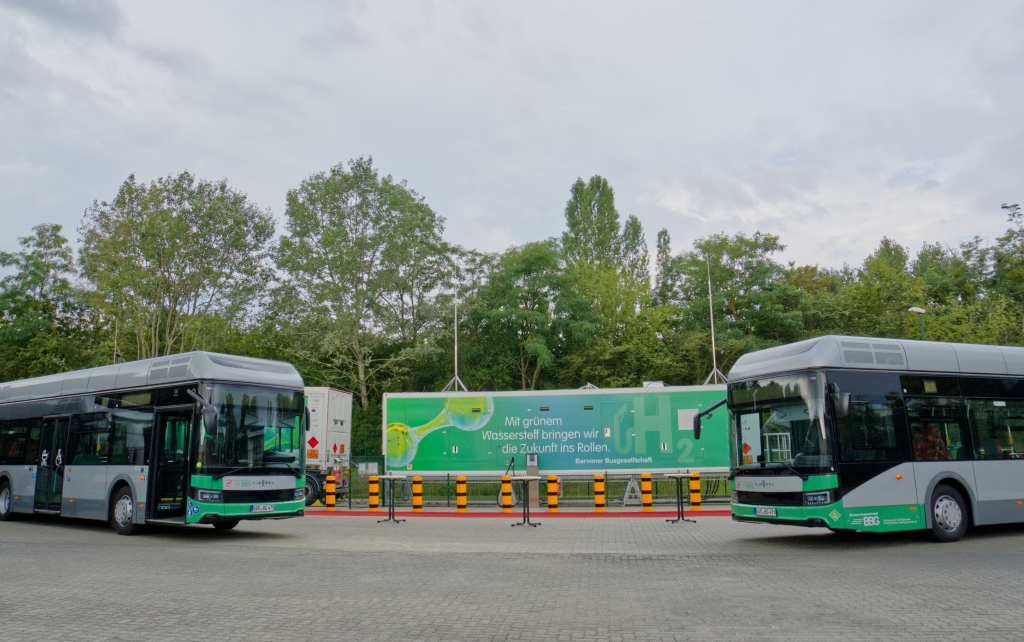
The vehicles are allocated at the BBG depot in Bernau. They run on hydrogen, which reacts with the oxygen in the air in the fuel cell. This produces electricity, which the bus then uses to drive completely emission-free. There are no exhaust gases, at most water vapour, and even that only rarely and in “homeopathic doses”.
The Van Hool A 12 LF FC is 12,225 m long, 2,550 mm wide and 3,400 mm high. Van Hool states the interior height as 2,300 mm. The wheelbase (distance from axle 1 to axle 2) is 5,790 mm and the coach can be equipped with a maximum of 41 seats. To make interior cleaning as easy as possible, the seats are suspended from the side wall and not fixed to the floor.
The fuel cell type “FC Move HD” has an output of 70 kW, it comes from the Canadian manufacturer Ballard, who is the world leader in the field of fuel cells and with whom Van Hool has been cooperating for more than ten years on this propulsion technology. Its electricity is fed to the permanent magnet motor “PEM 2016” from Siemens, which delivers 160 kW of power to the road. The bus’s batteries come from Actia and have a capacity of 24 kWh. The interaction of these drive elements gives the vehicle a range of more than 500 kilometres.
The hydrogen is stored in the buses in pressurised cylinders made of the synthetic material composite on the roof. Fully fuelled, the bus has 36 kilograms of hydrogen on board, and it consumes 7 kilograms of its “fuel” per 100 kilometres. Its range is therefore (36 : 7 =) approximately 510 kilometres.
The hydrogen the buses run on is supplied by “Enertrag SE” from Schenkenberg-Dauerthal in Brandenburg. It was founded in 1998 and traces its roots back to the nuclear physicist Jörg Müller, who began generating electricity with a wind turbine in 1992. The hydrogen for the BBG buses is “green hydrogen”, which means that the electrolysis to produce it runs exclusively on electricity generated from renewable sources. Enertrag supplies 1,000 kilograms of hydrogen at a time, which the BBG stores in its own tank system from the manufacturer Wystrach. This consists of one fixed and two mobile containers. It takes about ten minutes to fill up a bus when the pressure bottles are completely empty.
Brandenburg’s Minister for Infrastructure and Regional Planning Guido Beermann said at the handover of the cars: “We want the mobility turnaround. Attractive and environmentally friendly public transport services are an important building block on the way there. This also includes the conversion of the bus fleets from diesel to climate-friendly drives. The use of hydrogen buses and the operation of a hydrogen filling station in Bernau are an important model project, because here we are learning how to bring this new drive technology to our entire state in the future.”
The federal state of Brandenburg supported the project in Bernau, with 2.8 million euros from the Eureopean Union and “European Regional Development Fund (ERDF)”. In addition, 1.7 million euros came from the Barnim district. The BBG itself invested 1.9 million euros. Everyone involved in the project agrees: “This investment is an important step for the future of mobility in the Barnim district and in the whole state of Brandenburg.”
